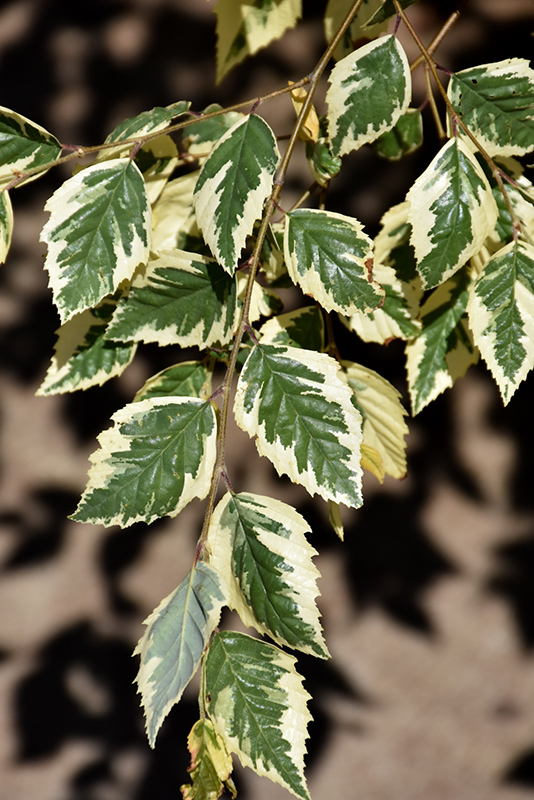Birch, Shiloh Splash Betula nigra 'Shiloh Splash' Height: 30 feet Spread: 15 feet
Sunlight:
Hardiness Zone: 3a Other Names: River (Red) Birch Description: A visually stunning pyramidal to oval variety; smaller green leaves have wide irregular white margins; peeling bark exposes the brown under layer, for great winter interest. Ornamental Features Birch, Shiloh Splash features subtle chartreuse catkins in early spring. It has green foliage edged in creamy white. The small serrated pointy leaves turn an outstanding yellow in the fall. The peeling white bark is extremely showy and adds significant winter interest. Landscape Attributes Birch, Shiloh Splash is a deciduous tree with a shapely oval form. Its relatively fine texture sets it apart from other landscape plants with less refined foliage. This is a relatively low maintenance tree, and is best pruned in late winter once the threat of extreme cold has passed. Deer don't particularly care for this plant and will usually leave it alone in favor of tastier treats. Gardeners should be aware of the following characteristic(s) that may warrant special consideration; Birch, Shiloh Splash is recommended for the following landscape applications; Planting & Growing Birch, Shiloh Splash will grow to be about 30 feet tall at maturity, with a spread of 15 feet. It has a high canopy of foliage that sits well above the ground, and should not be planted underneath power lines. As it matures, the lower branches of this tree can be strategically removed to create a high enough canopy to support unobstructed human traffic underneath. It grows at a medium rate, and under ideal conditions can be expected to live for 70 years or more. This tree does best in full sun to partial shade. It is quite adaptable, prefering to grow in average to wet conditions, and will even tolerate some standing water. This plant should be periodically fertilized throughout the active growing season with a specially-formulated acidic fertilizer. It is not particular as to soil type or pH. It is highly tolerant of urban pollution and will even thrive in inner city environments. This is a selection of a native North American species. Special Attributes Early Spring 1 1/2 to 2 inch catkins appear and releases tiny seeds during summer and fall. River Birch are more resistant to the Birch Borer. ![]()
![]()
![]()
![]()
![]()
![]()
![]()
![]()
![]()
![]()
![]()
![]()

